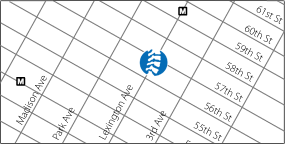Keeping Your Back On Track, Part 2
 Dr. Marc A. Bochner on
Dr. Marc A. Bochner on  Tuesday, August 22, 2006 at 01:51PM
Tuesday, August 22, 2006 at 01:51PM Once the relationship between anatomy and lifestyle and their effects on the back has been understood, then steps can be taken to address the physical, chemical and emotional stressors which lead to back injury. Solutions for combating the physical stressors of running will be discussed here. Before I get started, it is important to note that there are non-musculoskeletal causes of back pain, such as referred pain from abdominal or pelvic organ disease. Whenever a patient presents to my office, a thorough history and examination is done to rule these out before treatment begins. If necessary, diagnostic imaging, such as x-rays or MRI, is done. Besides helping in ruling out the non-musculoskeletal causes of back pain, these studies can reveal any bone abnormalities and arthritic conditions, which may play a role in causing back pain. However, it is important to remember that many people with imaging findings of disc degeneration or disc herniation, for example, may not be in constant pain if the functional ability of their muscles is at a high level. The “whole patient is treated, not the x-ray”, which is one reason why so few people need surgery as the solution to their back problem.
In general, addressing the physical stress of running on the lower back involves maintaining the core strength and overall flexibility reviewed in the above information on anatomy. However, there can be differences in the type of lower back pain experienced by beginner runners and veteran runners. Beginners and those who have not been running in a while often have pain from tightness and weakness in the lower back extensor muscles, especially when running hills. Pain may be present only during the run, and may or may not disappear as you warm-up. The solution can be as simple as adapting to running again; as conditioning improves the pain should decrease. However, if you have been really inactive or if pain persists after a few runs, core strengthening and general flexibility work are probably needed.
In veteran runners- especially in marathoners, muscle imbalances can lead to lower back pain and/or sciatic type pains in the buttocks, hips, hamstrings and calves. Distance running tends to tighten these muscles, as do many other activities, such as sitting at work, and after many years of both activities pain can develop. Pain down the legs can be "psuedosciatica", referred from restricted spinal joints of the lower back and/or from "trigger points", which are knots in the muscles of the lower back, hips and legs. However, disc problems can irritate the spinal nerves and cause "true sciatica" with pain anywhere along the path of the sciatic nerve.
In beginners and veterans alike, the type of treatment necessary depends on if the pain and injury is in the acute or chronic stage. For example, a runner might ignore the warning signs of persistent muscle tightness after longer runs, and eventually experience pain, either during or after a run, that is very severe and incapacitating. Treatment will start with reducing or stopping training and applying ice to the area to reduce pain, swelling and spasm. Office treatment will include electric muscle stimulation, ultrasound heat treatments, and chiropractic adjustments, to get the tightened muscles and joints moving again. Next are pain-relief stretches. The exact exercises to be done in cases of acute lower back pain are very specific to each individual’s injury. Some people need "flexion exercises" and some people need "extension exercises" to help mobilize the spine and relieve pain, and this is decided with the help of the doctor. Once the pain relief stage is over, corrective exercises and joint and muscle balancing techniques must be done to prevent re-injury, just as in chronic injury, which is described below. It is important to note that anti-inflammatory medication or steroid injections may help in relieving the acute pain in some cases, but should never be the end-point of treatment, as they do not address the underlying, functional causes and leave one open to re-injury.
Treatment of chronic LBP in runners must address the functional imbalances that cause pain themselves or allow degenerative joint and disc problems to become symptomatic. This involves identifying which muscles are tight and/or weak, and which joints are not moving properly. Common muscle patterns involve tight hip flexors, especially the upper quadriceps and psoas muscle, with weakness in the opposing hip extensors (gluteus maximus and upper hamstring) muscles, or tight lower back extensors with weakness in the opposing lower and deep abdominals. These are some of the vital “core” muscles mentioned in part one. Further down, the lower hamstrings and calf muscles are often tight. Also, the hip abductors (outer hip) are often weak and the adductors (upper, inner thigh) tight. Before the weak muscles can be strengthened, the tight ones must be stretched. Office treatment involves manual release, such as Active Release Techniques, of muscle trigger points and adhesions, which is often essential in restoring proper flexibility and strength. Then, stretching can be done with assistance, as part of office treatment, and by using self-stretching techniques at home, such as active-isolated stretching. As for joint restriction, the lower thoracic and all of the lumbar vertebra, plus the sacroiliac (between the hip bones and sacrum) joints, are often involved. Office treatment includes spinal and extremity adjustments to restore normal joint motion and coordination.
Once normal muscle length is restored, strengthening and stabilization exercises are added, starting with isometric deep abdominal and deep back extensor contractions, and progressing to holding this core tight while performing arm and leg movements, and then to exercises such as standing lunges and squats. Balance exercises and full-body movements such as pull-ups and push-ups are also beneficial, as they strengthen the upper back, which is essential in maintaining an upright posture during long runs.
Other factors that need to be addressed for successful management, if they exist, include correcting overpronation and leg-length inequalities with orthotics and/or heel lifts. And, of course, training errors must be examined, such as too many hills when just starting to run or after a layoff, worn out shoes, only running on pavement, too many long runs in a marathon training plan or not enough recovery between long runs.
This program of treatment will prevent the cycle of minor joint strain and muscle tightening, pain, emotional disturbance, and further physical damage from occurring. It will keep the healthy muscle tissue from being damaged and replaced with fibrotic scar tissue, which is less elastic, weaker and more prone to injury.
Because this information is often learned only after serious injury and training interruption, an earlier understanding and proper intervention may make it easier to keep your back, and your training, on track.




Reader Comments (2)
-Rolex Datejust II watches Swiss good